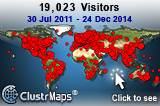Some more details have been released on the upcoming (Q4 2011) release of Veeam Backup & Replication Version 6. Hyper-V support is the major announcement that was made quite a while ago, but there are some new goodies being implemented to.
Backup proxies are being introduced which allows for a new scale out architecture to be implemented. Rather than the main backup server doing all the processing and load bearing of the entire backup infrastructure, backup proxies can be deployed within the environment which allows this processing to be offloaded to them. This allows for a massive amount of scale out, compared to the current v5 method of just adding another Backup & Replication Server. Enterprise Manager will stay and give you the ability to manage all main and proxy based servers plus the ability to edit and copy backup jobs, which currently is not possible as Enterprise Manager is used only for reporting.
Replication speed is increased, in some cases, being reported as 10x in a push environment. It allows the use of the vSphere API’s for Data Protection, called Hot Add to perform writes. This enables support for replication of thin provisioned target disks and cuts down on network traffic, which in turn improves replication speeds.
Some other updates:
- Failback with the ability to sync modifications to data made since failover — either on one single machine or all Virtual Machines
- Creation of replica copies of the master images in the event of a failover
- Seed first backups via portable hard drive instead of doing primary syncs over the network
- Restore single files from the search results in Enterprise Manage, through just one click
- Delegate authority to helpdesk staff to complete file level restores
- Free license swaps between VMware and Microsoft Hyper-V, (depending on the number of per-socket licenses being available)
Personally, I can’t wait for v6 to be made publically available in Q4 due to the addition of the scale out architecture and speed increases in replication, this is a definite plus to this already brilliant product and is giving all the other backup solutions a run for their money.




